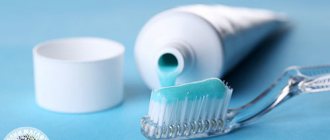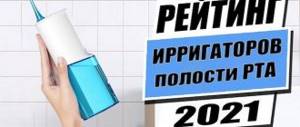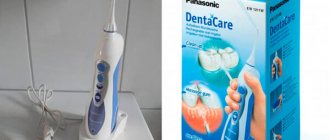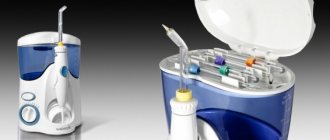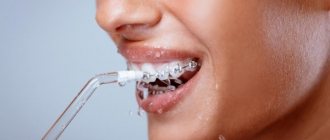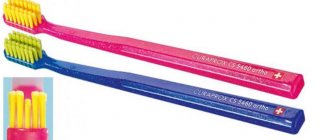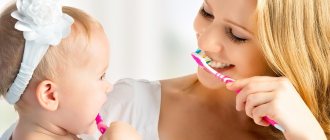How to use an oral irrigator: tips, videos, purpose
The tips collected here will be useful both to those who have already purchased and to those who are just about to choose an oral irrigator. These are our specialists' answers to frequently asked questions from clients. We wrote earlier about how to choose an irrigator.
How does the irrigator work?
An irrigator is a special device for oral hygiene that provides the highest quality care. During operation, water or a special liquid under pressure is supplied from the reservoir. Irrigator nozzles direct water to those areas of the oral cavity that cannot be reached with a toothbrush or floss. There, the water, due to pulsations, cleans the interdental spaces and massages the gums.
The water pressure can be adjusted. All surfaces of the teeth, gums, tongue, interdental space, dentures and orthodontic structures are cleaned.
How often to use a waterpik
Every time after brushing your teeth with a toothbrush. Due to braces and bridges, food debris gets stuck more often, so if you wear braces in your mouth, you should use a waterpik after every meal. Even if you manage to use the irrigator only once a day, it is better than not using it at all. The main thing is to do it regularly and not stop. Then you will receive excellent prevention of gum disease and high-quality cleaning of hard-to-reach areas of the oral cavity.
What to put in the irrigator? Water, balms?
Drinking, bottled water, and saline solutions are suitable for the irrigator. The water should be at room temperature. Hot water harms the irrigator, and cold water damages the teeth. You can also use tap water if it is not too hard. Herbal infusions can cause deposits in the irrigation system, causing it to need to be cleaned more often than usual. Dentists recommend using special balms that can be added to the water before procedures.
- Balms kill pathogenic bacteria.
- Freshen your breath.
- They are carefully filtered, so they do not clog the irrigator with microparticles.
- They do not foam inside the device, unlike mouth rinses.
- They do not leave sediment like herbal infusions.
- They have an anti-inflammatory and healing effect.
Am I holding the waterpik incorrectly?
In order to use an oral irrigator correctly, you must hold it so that the stream is at right angles to the surface of the teeth or gums. Be prepared for a lot of splashing at first, but you'll get better at it over time. There will be a lot of water, so do the procedures at the sink.
How to choose pressure
The irrigator strengthens the gum tissue. But before this happens, you should limit yourself to the weak pressure of its stream. Gradually increase the pressure to the maximum (600-700 kPa), it is with this that you can achieve a therapeutic effect on the gums. There is a common misconception that an irrigator does not properly rinse the space between the teeth unless the pressure is maximized. This is wrong.
Why are attachments needed?
The attachments expand the list of useful properties of the irrigator, clean out gum pockets, and additionally cleanse plaque from tooth enamel. It is recommended to change standard brush heads approximately once every six months, brush heads with bristles or rubber bands - once every 3 months, like a toothbrush.
- Standard. If you do not have any special diseases or structures in your mouth, a standard attachment will suit you. It has no bristles and looks like an angled tube. Thoroughly and effectively removes plaque and food debris. As a rule, most irrigators come with two such attachments.
- Orthodontic. A curved tube with a tuft of bristles at the end. Used for braces and other similar structures. The combination of mechanical action and a jet of water allows you to clean the spaces between the teeth and the arches of braces, and remove plaque in hard-to-reach places.
- Periodontal. Designed for periodontal pockets. The tip of the nozzle is made of soft silicone or rubber, which does not injure sensitive gums. The periodontal nozzle cannot be used at maximum pressure - it already artificially creates additional pressure and with strong pressure its tip may simply fly off.
- Brush attachment for removing plaque. Provides additional care for crowns, bridges and fixed dentures. Does not replace a regular toothbrush.
- For cleaning the tongue. The spoon-shaped attachment is used after brushing your teeth to remove plaque from the surface of the tongue, cheeks and palate.
- Brush attachment. Used as a toothbrush in combination with a stream of water. Cleans teeth, crowns, dentures well. Suitable for daily use. It is important to remember that this attachment will not replace a toothbrush. In addition, her stubble is very hard.
- Nasal attachments. Suitable for cleaning nasal cavities.
How to care for the device so that it lasts as long as possible
Daily brushing of teeth in the morning and evening is not enough for high-quality prevention of caries and other dental diseases. Experts also recommend using antiseptic rinses, dental floss and irrigator. The latter is a device that delivers a high-pressure water jet to effectively clean hard-to-reach areas.
As a rule, oral hygiene using an irrigator involves the use of tinctures of medicinal herbs and special medical solutions. In such cases, the device requires rinsing and cleaning after each use. To do this, you need to fill the device halfway with warm water and pour it through the spout into the sink, then rinse the irrigator under running water.
Like any other electrical device, an oral irrigator requires careful and proper handling. If used correctly and all safety rules are followed, it will serve your family for many years.
Be sure to rinse the new irrigator with warm water before use. After use, drain the remaining liquid, wipe the device with a napkin or towel and put it in a dry place. The attachments must be stored in the storage compartment or in a special holder.
The device must be washed 1-2 times a month when using water and every week when using solutions. The attachments should be washed at the same frequency or more often, if possible changing them after 3-4 months. Washing is carried out with warm boiled water. You can use a sponge to clean dirty parts.
What kind of water to pour into the irrigator - Revyline Blog
The number of people using irrigators for oral care is growing rapidly. Once you have experienced the capabilities of these devices, it is difficult to refuse them, because irrigation cleaning is by far the most effective procedure for removing bacterial plaque.
Along with the growing popularity of irrigators, the number of questions related to the correct operation of the devices is also growing. Very often, buyers and users ask: “what kind of water should be poured into the irrigator reservoir”? Our material today is devoted to answering this question.
Is it possible to use regular tap water?
The user is always tempted to simplify cleaning procedures - not to waste time preparing the liquid, but to use ordinary tap water. Let's say right away - this should be avoided. For cleaning, you must use boiled filtered water. Distilled water may be considered ideal for the procedure, but this is a rather expensive option.
It is enough to pass the water through a regular household filter. This will rid the water of various contaminants and soften it. This water is safe for use and will not harm the irrigator itself.
Hardness of water
Water hardness refers to its physical and chemical properties associated with the amount of calcium and magnesium salts dissolved in it. The higher the concentration of these salts, the higher the hardness and the greater the danger such water can cause to the irrigator. The device contains a large number of tubes and cavities that come into contact with water. Excessive hardness leads to salt deposition (liming) on the internal parts of the irrigator. As a result, the performance of the irrigator decreases and the risk of breakdown increases.
https://www.youtube.com/watch?v=JTALqLo8v5M
In different regions of the country, water differs in hardness. There are several categories of water hardness:
- Soft water . Has less than 2 °F (degrees of hardness);
- Water of medium hardness . From 2 to 10 °F;
- Hard water . Over 10 °F.
Water with a hardness level greater than 12 is considered super-hard.
The softest water is in the Far East, Eastern Siberia and Northwestern Russia. In Central Russia and the Urals the water is hard.
To ensure that limescale does not accumulate on the internal surfaces of the irrigator parts, and the device serves you for many years, you need to use Revyline irrigator cleaner. To do this, 1-2 times a month (depending on the hardness of the water) it is necessary to carry out preventive cleaning of the irrigator.
How and how to clean the irrigator from limescale, scale, mold
If the irrigator is clogged, you can clean it with simple household products at home. It is not necessary to contact the service or buy special tools and tools for this.
How to clean an irrigator with citric acid at home
Citric acid helps get rid of limescale, scale and other solid deposits in the irrigator. It dissolves dirt and at the same time has a strong antibacterial effect. If you regularly clean the device using lemon juice, then a bad odor or mold will never appear in it.
The composition for caring for the unit is prepared as follows:
- Pour 500 ml of warm filtered water without hard salts into a glass.
- Add 25 g of powdered citric acid.
- Stir the product until the particles are completely dissolved.
To clean the irrigator, you must first completely disconnect the device from the network. Remove the lid from the unit’s reservoir, remove the container from the body and drain the remaining water or dental solution from it. It is also necessary to disconnect the oral attachment from the device. The further algorithm of actions looks like this:
- Diluted citric acid is poured into the tank for cleaning and left in a calm state for 15-20 minutes.
- The nozzle is also immersed in the prepared liquid.
- After time, the irrigator is reassembled and reconnected to the network.
- The device is started for a full operating cycle and all the liquid from the reservoir is completely drained through the nozzle.
As a result of cleaning, solid contaminants will be removed from the device along with the citric acid solution. At the end of the procedure, you will need to fill the device with ordinary water and repeat the treatment 1-2 times in order to reliably rinse the irrigator from any remaining caustic agent. At the last stage, the unit must be disassembled into parts again and laid out in a dry, warm place until the remaining moisture evaporates.
Instead of citric acid, you can dilute the same amount of fresh citrus juice in warm water.
How to clean a waterpik with vinegar
In case of excessive scale, bad odor from the irrigator, mold and mildew, you can use a vinegar solution. It effectively destroys microorganisms and removes solid contaminants from plastic and metal surfaces. The cleaning agent is done as follows:
- Pour 400 ml of filtered water heated to warm into a glass.
- Add 100 ml of table vinegar 7% or 9%.
- Stir the product.
Rinsing the irrigator with the prepared composition is carried out according to the standard algorithm. First, you need to pour diluted vinegar into the reservoir and nozzles of the device and leave for some time so that the hard deposits have time to soften. After this, the unit is assembled and put into operation according to the usual program. When the solution in the tank runs out, the device will need to be rinsed twice with clean water and its parts laid out on a towel to dry.
Using vinegar, you can also wash the outside of the irrigator to remove fatty deposits and plaque. Soak a cotton pad or cloth in the solution and wipe the plastic surfaces thoroughly.
You cannot pour pure vinegar or 70% essence into the irrigator - the concentration will be too high
How to clean an irrigator using soda
If the irrigator is slightly dirty, you can use soda powder for cleaning. It has disinfecting properties and removes fresh scale. The preparation algorithm is as follows:
- About 15 g of powder is poured into 500 ml of warm water.
- Stir the grains.
As in previous cases, soda water must be placed in the device’s reservoir, and then drained through the nozzle, putting the device into operation. The home remedy is especially convenient because it is easily washed out of the irrigator after cleaning. Even if the remains of the soda solution linger in the internal parts, if they enter the oral cavity they will not cause any harm to the mucous membranes and teeth.
Unlike vinegar, soda solution does not have a persistent specific odor.
How to clean an irrigator with hydrogen peroxide
You can clean the inside of the irrigator from mold and unpleasant odors with 3% hydrogen peroxide. The product copes with solid contaminants worse than citric acid or table vinegar, but it provides very high quality disinfection. When treating the irrigator with a homemade solution, fungi and microorganisms die almost instantly, and along with them the musty aroma emanating from the tank and nozzles disappears.
Concentrated peroxide is not recommended for cleaning the device. Typically a solution is prepared:
- Heat 300 ml of pure distilled water to a warm temperature.
- Add 10 ml of hydrogen peroxide.
- Stir.
According to the standard algorithm, the cleaning agent must be placed in the irrigator container, left for 15 minutes, and then put the device into operation and drain the liquid through the nozzle. It is not necessary to additionally rinse the device after servicing; you can immediately lay out the removable parts to dry.
You need to treat the irrigator nozzles with peroxide especially carefully - bacteria accumulate on them abundantly
Oral irrigators: how to choose?
- Collections
- Accessories
1 star 2 stars 3 stars 4 stars 5 stars
Irrigation, land reclamation... For an ordinary person, this is something from the field of agriculture. And today we will tell you about the toothbrush of the future - an oral irrigator. What is it good for and how to choose it?
If you've recently had your teeth treated by a dentist, then you've definitely met an irrigator - you just didn't know it was him. Specialists greatly value this device and actively use it during surgical procedures. What kind of animal is this? Why is it needed in everyday life? And most importantly, how to choose an irrigator?
What is an oral irrigator?
This is a device for hygiene of teeth and gums. Unlike a toothbrush, it cleans the oral cavity not with bristles, but with a pulsating stream of water supplied with alternating pressure through special nozzles. “Irrigator” literally means “irrigator”.
The irrigator is used after brushing your teeth to thoroughly “rinse” your mouth and remove everything that the bristles have not reached. Except for the areas between the teeth, you can’t do without dental floss.
According to research, using an irrigator after brushing can remove up to 99% of plaque and plaque on teeth. And also massage your gums, which helps a lot with various inflammations.
Who needs an oral irrigator?
The irrigator is indispensable for people who experience problems with teeth and especially gums. According to dentists, this device is recommended:
- If you (or your child) have braces to correct your bite . It allows you to more thoroughly clean teeth held together by metal arches.
- If you have dental implants or crowns . A jet of water is a good way to care for artificial materials such as plastics or ceramics.
- If you have gum disease . For bleeding and inflammation, cleaning with water is a more gentle method than using a toothbrush.
Recommendations for safe and effective use of the device
Cleaning the oral cavity with an irrigator should be carried out according to the instructions for use. We will talk further about how this is done correctly. To begin with, we will give some tips and recommendations to ensure that your first acquaintance with the device and its subsequent use are safe and effective.
General recommendations:
- use the device in comprehensive oral care: that is, not instead of a brush, paste and rinse, but only together with them. Remember that an irrigator is not an independent tool, it does not replace, but only effectively complements all the others,
- Start getting acquainted with the device on the lowest setting: this will help your gums and teeth get used to new unusual sensations and avoid discomfort. As you get used to it, the water pressure can be increased,
- if you have braces, crowns, bridges and dentures, you need to clean not only in the morning and evening, but also after meals,
- You cannot use floss before the irrigator: if you floss carelessly, you can damage your gums, and then subsequent cleaning can aggravate their condition,
- when a stream of water is applied, it is better to keep your tongue raised up: then the liquid will not enter the stomach and lungs, but will pour out,
- if you experience pain, then you need to stop cleaning or adjust a more gentle mode,
- Each family member has their own replaceable nozzle, but there can only be one device,
- the cleaning procedure for children should only be carried out under the supervision of parents: there are “children’s” models suitable for use in children over 3 years old, but doctors do not recommend using the device until the child is at least 6 years old,
- if there is acute inflammation of the mucous membrane or bleeding that does not go away within 3 days, then you must stop using the device until you consult a doctor,
Caring for the device
Before first use, the device must be rinsed with warm water. After each use, the remaining solution must be poured out and the device wiped with a dry cloth. It is better to store it in a dry, ventilated place. Nozzles should be stored in the holder (if it was included) or in a special compartment of the device.
If only clean water is used for oral care, then the irrigator can be washed once every 2-3 weeks. When using any solution - at least once a week. The attachments should be washed at the same time as the device, but it is better more often. It is advisable to replace them with new ones at least once every 3-4 months.
If the irrigator operates on ordinary water, it must be cleaned regularly
Advanced models of devices include a sterilizer for attachments. If the irrigator uses tap water, it must be carefully looked after: regularly washed to remove sediment with special solutions.

